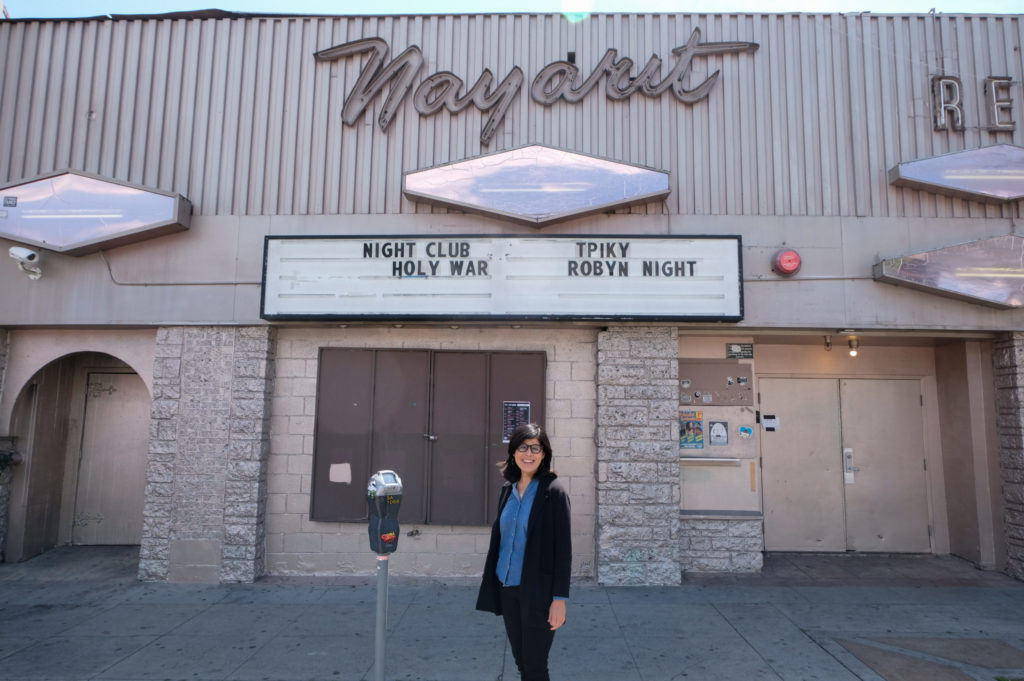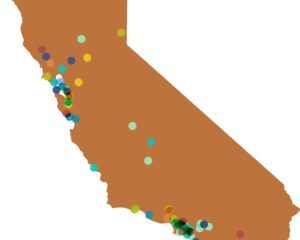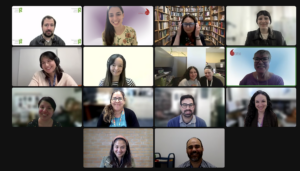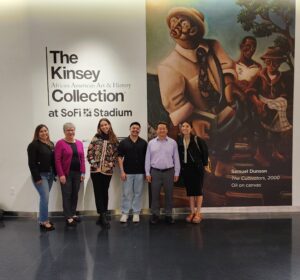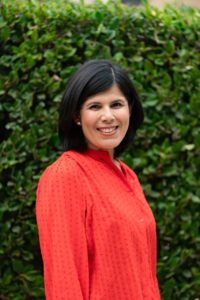
This month, Natalia Molina, a former California Humanities board member, joins our growing “3 Questions” collection of board interviews. Her most recent book, A Place at the Nayarit: How a Mexican Restaurant Nourished a Community, both inspires us and makes us hungry. Dr. Molina is a Distinguished Professor of American Studies and Ethnicity at the University of Southern California, specializing in history, Latinx studies, immigration, gender, foodways, and public health. She is a 2020 MacArthur Fellow and the author of the award-winning books How Race is Made in America: Immigration, Citizenship, and the Historical Power of Racial Scripts and Fit to be Citizens? Public Health and Race in Los Angeles, 1879-1940. She will be the keynote speaker on the opening night of the National Humanities Conference in Los Angeles on November 10, 2022, hosted by California Humanities and produced by the Federation of State Humanities Councils and the National Humanities Alliance.
- A Place at the Nayarit: How a Mexican Restaurant Nourished a Community is both a record of your family’s history and an important chronicle of LA’s cultural life and immigrant history. Why did you decide to write this book, and how did you balance those multiple aspects while writing?
The book is certainly based on my grandmother’s story, pieces of which I’d heard about from people who knew her all my life. But as a historian, I realized I could use it as a springboard to tell a larger story about how outsiders find their place in a new homeland. I was pulled back to Dona Natalia’s story, partly because of what’s been happening in Echo Park, where the Nayarit was located. During my childhood, Echo Park was an ethnically and economically diverse, liberal neighborhood: I could walk down the street and visit what I call in the book “urban anchors,” community institutions built by the community for the community: I could get a Cuban pastelito at Carmelo’s Bakery, enjoy huevos rancheros at Barragan’s restaurant, visit my Tia Evelia at her market, El Batey. But over the last two decades, gentrification has happened so quickly that I can hardly recognize the neighborhood, and many of the people who’d made it such an attractive place to live have been pushed out. I didn’t want stories like theirs to be lost. I remember giving a talk about the project in 2014 at the Historical Society of Southern California Conference, the first time I publicly connected the story of the Nayarit to the story of the neighborhood. The audience included a large number of Latinx people who stuck around afterward to tell me about the changes they’d seen in Echo Park, Boyle Heights, Highland Park—dispossession, evictions, business closures, the whole gamut. Their enthusiasm for my project helped push me along.
- How much did your grandmother’s journey as a successful businesswoman and forward thinker influence your life and career? Since you were born after she passed, what do you wish you could ask her?
As a historian and urban studies scholar, I have been reading, researching, teaching, and writing about for the last 20 years how race, as my friend historian George Lipsitz puts it, ‘takes place,’ not just figuratively but also literally. Just think of how labeling a part of the city a “barrio” or a “ghetto” suggests that certain types of people live there. In the mid-20th century Los Angeles, being Mexican shaped people’s access to space, including where they could live, work, worship, play, go to school, and even be buried. I would love to ask my grandmother, a 5-foot-two Mexican immigrant, how did she have the chutzpah to become what I call a “placemaker” and open a restaurant that was a safe and familiar space for working-class Mexicans at this critical time? Also, people like Doña Natalia (as I refer to her in the book) were key in terms of integrating immigrants into the United States and giving them a head start in their new life. And she didn’t stop there! She was adamant that those she sponsored should broaden their horizons. As such, she encouraged the many people she sponsored, as well as her daughter Maria, my mom, to step out of their usual routine once a month: to explore a different part of town, take in a show, and dine at a fine restaurant. In that sense, she and the workers weren’t just placemakers but also place-takers. Sociologists study and layout best practices on how to move immigrants up the proverbial ladder in America. She seemed to come by this organically, and I’d love to know what shaped her placemaking and place-taking philosophy.
- And, because we love to talk about food at California Humanities, can you tell us some of your favorite food memories?
In addition to loving and appreciating good food, I am fascinated by the connections between food and memory and the ways food can keep us tethered to a place. I know many people, for example, have a favorite taco place that is usually in their neighborhood. For me, I can choose my tacos based on what place or the memory I am nostalgic for. When I miss San Diego, where my family and I lived for 17 years and where I taught, I look for Tijuana-style tacos de adobada, complete with a healthy dollop of guacamole—and I know I can find them at Angel’s taco truck in Eagle Rock. In high school, we lived for off-campus lunch when we could go get the warm goodness of the Cochinita Pibil Burrito (Yucatan-style pork) at Yucca’s in Los Feliz (now in Pasadena, too), which I order to this day. And though I am a third-generation Mexican American, I remain tethered to Nayarit (a small state in western Mexico), as my grandmother and mother were before me, which we still visit regularly as a family. So, when I miss my family or the beautiful beaches of Nayarit, I might head over to
Mariscos El Faro in Highland Park offers seafood dishes from the region, including an aguachile (a ceviche that’s bright and hot in its simplicity- shrimp, diced vegetables, chile). I’d like to think I’ve inherited some of my grandmother’s place-taking philosophy. So, while I visit regular spots, I also seek out new taco trucks, stands, and Mexican restaurants (shout out to Latina-owned Pocha in Highland Park!) in different neighborhoods. Indeed, my family started a new tradition of taco Tuesday night during the pandemic, which gave us something to look forward to.

